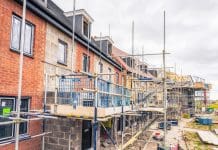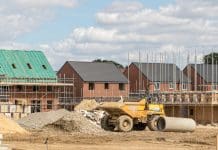Sports England, the Gardens Trust and Theatres Trust will ‘no longer be required to input’ on planning decisions, with the scope of other legally required stakeholders reduced
Statutory consultees will have their scope and influence rolled back under proposed planning reforms, as the government seeks to facilitate increased housebuilding.
The government will consult on the decision later in the spring on removing some organisations from the list entirely, whilst seeking to “reduce the type and number” of applications that will require statutory consultee’s input.
The reforms would see the system transition from a case-by-case basis to relying more on standing guidance and working with the National Planning Policy Framework (NPPF).
The deputy prime minister and chancellor already paused the formation of new statutory consultees earlier this year.
Deputy prime minister Angela Rayner said: ‘We’ve put growth at the heart of our plans as a government with our Plan for Change milestone to secure 1.5m homes and unleash Britain’s potential to build.
‘We need to reform the system to ensure it is sensible and balanced and does not create unintended delays – putting a hold on people’s lives and harming our efforts to build the homes people desperately need.
‘New developments must still meet our high expectations to create the homes, facilities and infrastructure that communities need.’
Over 25 organisations are statutory consultees
The number of statutory consultees has grown “haphazardly” according to the government, with issues such as:
- statutory consultees failing to engage proactively;
- organisations taking too long to provide their advice;
- re-opening issues that have already been dealt with in local plans;
- submitting automatic holding objections which are then withdrawn at a late stage; and
- submitting advice that seeks “gold-plated” outcomes, going beyond what is necessary to make development acceptable in planning terms
Over 300 applications were forced to seek approval by the Secretary of State after disagreements with consultees.
One case in Bradford saw a development to create 140 homes next to a cricket club significantly delayed because “the application was thought to have not adequately considered the speed of cricket balls”.
Sports England responded:
“The purpose of our statutory planning remit is to protect playing fields and community spaces for sport and physical activity.
“Britain’s childhood obesity crisis is rising and low physical activity levels cost our economy £7.4bn a year, making it vital we protect the places where local communities can be active.
“We support growth, and exercise our powers carefully and quickly, ensuring local neighbourhoods are designed to help people live healthy, happy and active lives.
“We look forward to taking part in the government’s consultation exercise and arguing the importance of protecting playing fields and places where local people can keep active.”
Others welcomed the proposals
However pro-growth campaign group Britain Remade welcomed the proposals, with chief executive Sam Richards commenting:
“The government is absolutely right to reduce the number of statutory consultees and refocus the scope of their work. Too many had become policy campaigners within the government machine – in the process slowing down the building we desperately need[…]It’s a step in the right direction but there’s still more they can do. For example, they’ve not introduced a “use it or lose it” approach to objections. This would remove the chance of statutory consults to intervene after they miss their deadline.
“There is also some irony in the fact that their decision to remove consultees from the process … has been put out to consultation.”















UK Heritage property is being destroyed by current planning policy
Heritage properties are being placed at risk by current planning authority regulations / policies. The current planning process is just far too complex with so many consultees all requiring separate costly reports.
For a basic householder with a listed building, there is potential of being required to submit several expensive (£2000 +) reports to do a relatively simple building project of minor significance to a historic property. The effect of this complex process is that people bypass the system (or don’t bother) and are in danger of undertaking the wrong works, or just letting the building deteriorate to eventual failure.
The best form of conservation is a used and operable building. The current academic processes and consultee bodies are making this almost impossible.
I have several historic building projects and 35 years experience, and the planning element has become ever more impossible to negotiate and over costly for clients. Planning authorities all have different regimes and have unknown costs / inconsistent approaches.
Costs for clients and property owners are far too high and unpredictable, discouraging actions to maintain / modify their historic building. In order for buildings to historically survive they need sensitive evolvement.
Conservation officers are designated advisors to the planning committee, and unlike the appeal process against the planning committee, no such appeal is available for the conservation officer. The effect is that conservation officers can be rather dictatorial in their duties and of no pragmatic assistance.
I have had experiences with listed buildings where planning authorities that have made me lost for words!
• Request for a heritage impact statement for the removal of a 1970’s hardboard partition.
• Refusal to the cleaning of a heavily stained stone building within a town centre.
• Refusal to allow the modification and reuse (as an office) of a collapsed pig sty
The current system requires an urgent review to enable pragmatic care of our heritage property. The current negative environment dissuades people from undertaking works.
Many current people involved in the planning / conservation process have no building experience and everything is approached from an academic tick box process. No two historic buildings are the same and all are unique, requiring their own solutions. The current tick box process does not allow for flexibility or judgment on what is the best solution for the building.
If nothing is changed soon, we are in danger of losing many historic properties and damage to our UK cultural heritage.